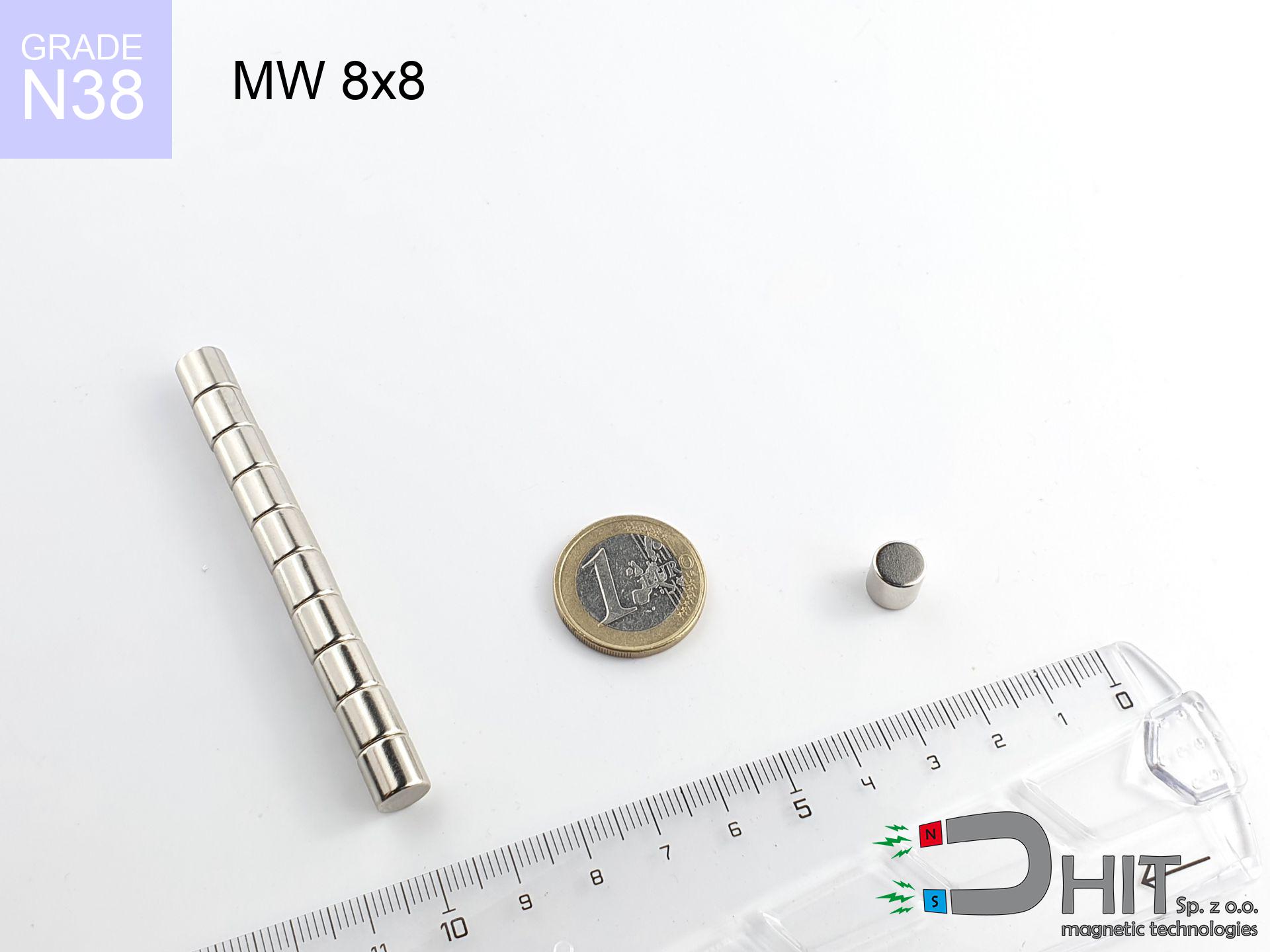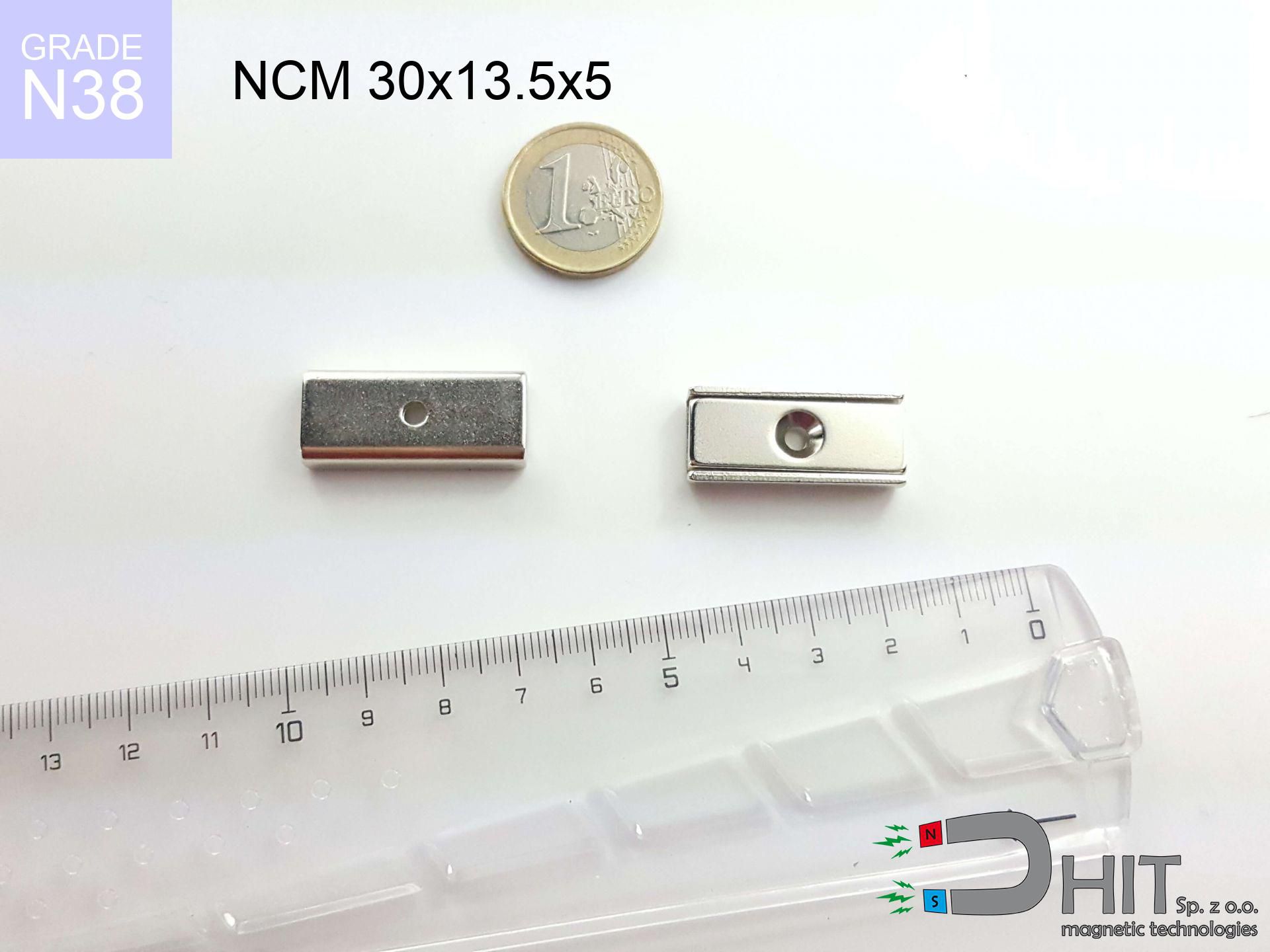HH 32x7.8 [M5] / N38 - through hole magnetic holder
through hole magnetic holder
Catalog no 370483
GTIN/EAN: 5906301814931
Diameter Ø
32 mm [±1 mm]
Height
7.8 mm [±1 mm]
Weight
37.8 g
Magnetization Direction
↑ axial
Load capacity
27.00 kg / 264.78 N
Coating
[NiCuNi] Nickel
17.96 ZŁ with VAT / pcs + price for transport
14.60 ZŁ net + 23% VAT / pcs
bulk discounts:
Need more?
Call us
+48 22 499 98 98
alternatively contact us using
inquiry form
the contact section.
Lifting power along with shape of magnetic components can be verified on our
magnetic calculator.
Same-day processing for orders placed before 14:00.
Technical - HH 32x7.8 [M5] / N38 - through hole magnetic holder
Specification / characteristics - HH 32x7.8 [M5] / N38 - through hole magnetic holder
| properties | values |
|---|---|
| Cat. no. | 370483 |
| GTIN/EAN | 5906301814931 |
| Production/Distribution | Dhit sp. z o.o. |
| Country of origin | Poland / China / Germany |
| Customs code | 85059029 |
| Diameter Ø | 32 mm [±1 mm] |
| Height | 7.8 mm [±1 mm] |
| Weight | 37.8 g |
| Magnetization Direction | ↑ axial |
| Load capacity ~ ? | 27.00 kg / 264.78 N |
| Coating | [NiCuNi] Nickel |
| Manufacturing Tolerance | ±1 mm |
Magnetic properties of material N38
| properties | values | units |
|---|---|---|
| remenance Br [min. - max.] ? | 12.2-12.6 | kGs |
| remenance Br [min. - max.] ? | 1220-1260 | mT |
| coercivity bHc ? | 10.8-11.5 | kOe |
| coercivity bHc ? | 860-915 | kA/m |
| actual internal force iHc | ≥ 12 | kOe |
| actual internal force iHc | ≥ 955 | kA/m |
| energy density [min. - max.] ? | 36-38 | BH max MGOe |
| energy density [min. - max.] ? | 287-303 | BH max KJ/m |
| max. temperature ? | ≤ 80 | °C |
Physical properties of sintered neodymium magnets Nd2Fe14B at 20°C
| properties | values | units |
|---|---|---|
| Vickers hardness | ≥550 | Hv |
| Density | ≥7.4 | g/cm3 |
| Curie Temperature TC | 312 - 380 | °C |
| Curie Temperature TF | 593 - 716 | °F |
| Specific resistance | 150 | μΩ⋅cm |
| Bending strength | 250 | MPa |
| Compressive strength | 1000~1100 | MPa |
| Thermal expansion parallel (∥) to orientation (M) | (3-4) x 10-6 | °C-1 |
| Thermal expansion perpendicular (⊥) to orientation (M) | -(1-3) x 10-6 | °C-1 |
| Young's modulus | 1.7 x 104 | kg/mm² |
Chemical composition
| iron (Fe) | 64% – 68% |
| neodymium (Nd) | 29% – 32% |
| boron (B) | 1.1% – 1.2% |
| dysprosium (Dy) | 0.5% – 2.0% |
| coating (Ni-Cu-Ni) | < 0.05% |
Ecology and recycling (GPSR)
| recyclability (EoL) | 100% |
| recycled raw materials | ~10% (pre-cons) |
| carbon footprint | low / zredukowany |
| waste code (EWC) | 16 02 16 |
Check out also deals
Strengths as well as weaknesses of neodymium magnets.
Advantages
- They virtually do not lose power, because even after 10 years the decline in efficiency is only ~1% (according to literature),
- They are extremely resistant to demagnetization induced by external disturbances,
- By covering with a shiny layer of nickel, the element acquires an aesthetic look,
- Magnetic induction on the working part of the magnet turns out to be very high,
- Thanks to resistance to high temperature, they are capable of working (depending on the shape) even at temperatures up to 230°C and higher...
- Possibility of custom machining and optimizing to complex applications,
- Fundamental importance in future technologies – they find application in magnetic memories, electromotive mechanisms, medical devices, and multitasking production systems.
- Thanks to their power density, small magnets offer high operating force, with minimal size,
Disadvantages
- At very strong impacts they can break, therefore we advise placing them in strong housings. A metal housing provides additional protection against damage, as well as increases the magnet's durability.
- Neodymium magnets lose their force under the influence of heating. As soon as 80°C is exceeded, many of them start losing their power. Therefore, we recommend our special magnets marked [AH], which maintain durability even at temperatures up to 230°C
- They oxidize in a humid environment. For use outdoors we advise using waterproof magnets e.g. in rubber, plastic
- Limited ability of making threads in the magnet and complicated forms - recommended is casing - mounting mechanism.
- Potential hazard to health – tiny shards of magnets pose a threat, in case of ingestion, which gains importance in the context of child health protection. It is also worth noting that small elements of these devices are able to be problematic in diagnostics medical in case of swallowing.
- Higher cost of purchase is a significant factor to consider compared to ceramic magnets, especially in budget applications
Holding force characteristics
Optimal lifting capacity of a neodymium magnet – what it depends on?
- on a base made of structural steel, effectively closing the magnetic flux
- possessing a massiveness of minimum 10 mm to avoid saturation
- with an polished contact surface
- without any air gap between the magnet and steel
- during detachment in a direction perpendicular to the mounting surface
- in temp. approx. 20°C
Key elements affecting lifting force
- Clearance – existence of any layer (rust, dirt, gap) acts as an insulator, which reduces power steeply (even by 50% at 0.5 mm).
- Pull-off angle – note that the magnet holds strongest perpendicularly. Under shear forces, the holding force drops significantly, often to levels of 20-30% of the maximum value.
- Steel thickness – insufficiently thick plate does not accept the full field, causing part of the flux to be lost to the other side.
- Material type – ideal substrate is pure iron steel. Cast iron may attract less.
- Plate texture – smooth surfaces guarantee perfect abutment, which improves force. Rough surfaces weaken the grip.
- Thermal factor – hot environment reduces magnetic field. Too high temperature can permanently demagnetize the magnet.
Lifting capacity testing was conducted on plates with a smooth surface of suitable thickness, under perpendicular forces, in contrast under parallel forces the lifting capacity is smaller. Additionally, even a small distance between the magnet’s surface and the plate decreases the lifting capacity.
Safe handling of neodymium magnets
Compass and GPS
Navigation devices and smartphones are extremely sensitive to magnetic fields. Direct contact with a powerful NdFeB magnet can permanently damage the internal compass in your phone.
Beware of splinters
Despite the nickel coating, neodymium is brittle and cannot withstand shocks. Avoid impacts, as the magnet may crumble into sharp, dangerous pieces.
Adults only
Neodymium magnets are not intended for children. Swallowing several magnets can lead to them pinching intestinal walls, which poses a direct threat to life and necessitates immediate surgery.
Conscious usage
Be careful. Rare earth magnets act from a long distance and connect with massive power, often faster than you can react.
Serious injuries
Risk of injury: The attraction force is so great that it can result in blood blisters, pinching, and broken bones. Use thick gloves.
Allergic reactions
Medical facts indicate that nickel (the usual finish) is a strong allergen. If you have an allergy, prevent touching magnets with bare hands or select coated magnets.
Fire risk
Combustion risk: Rare earth powder is explosive. Do not process magnets without safety gear as this risks ignition.
Medical implants
For implant holders: Strong magnetic fields disrupt electronics. Keep minimum 30 cm distance or ask another person to work with the magnets.
Thermal limits
Watch the temperature. Exposing the magnet to high heat will ruin its magnetic structure and pulling force.
Electronic devices
Data protection: Neodymium magnets can damage payment cards and sensitive devices (heart implants, hearing aids, mechanical watches).

![Magnet with hole HH 32x7.8 [M5] / N38 Magnet with hole HH 32x7.8 [M5] / N38](https://cdn3.dhit.pl/graphics/banners/magnet.webp)
![HH 32x7.8 [M5] / N38 - through hole magnetic holder](https://cdn3.dhit.pl/graphics/products/hh-32x7.8-m5-war.jpg)

![UI 17.5x5 [C310] / N38 - badge holder UI 17.5x5 [C310] / N38 - badge holder](https://cdn3.dhit.pl/graphics/products/ui17.5x5-c310-rud.jpg)



